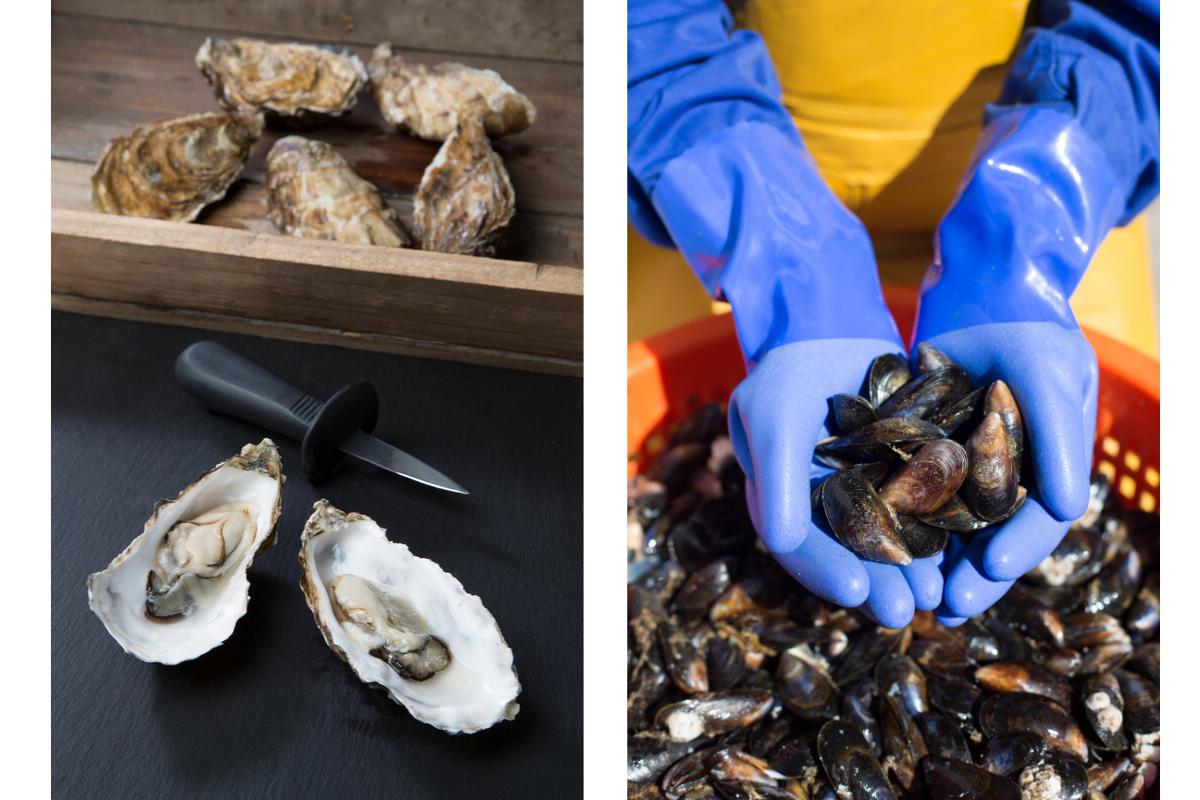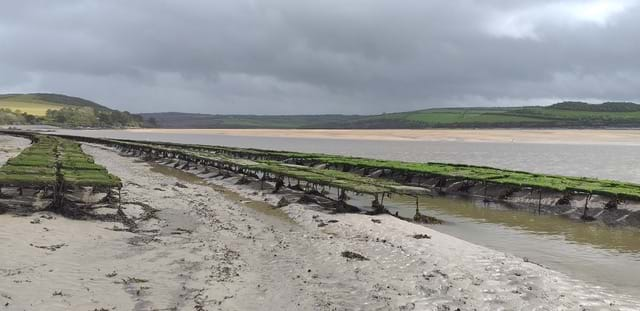Reviewing water quality management to help shellfish farmers
Bivalve shellfish production is an important economic growth area for UK aquaculture, but the sustainability of the industry depends on clean and healthy coastal waters. If water quality is poor this has a detrimental impact on shellfish production and can compromise market potential.
There are measures in place to manage risks and we’ve been working with shellfish producers, regulators and researchers on water quality issues to support the production of high quality shellfish. We’ve looked at how the Official Control Regulations are applied and facilitated research to provide the scientific evidence required to initiate change.
In this blog I’ll explain what’s being done to manage risks and support our shellfish aquaculture sector.

Why and how water quality risks are managed
Microbial contaminants in water can come from human sewage, wildlife or livestock. Some of these contaminants (especially norovirus) can cause illness in humans and so we monitor water quality to make sure our shellfish is safe to eat. If bivalves, such as oysters and mussels, are eaten raw or lightly cooked, there can be a greater risk of illness but there are checks and balances in place to reduce the likelihood of this happening.
The Official Control Regulations were put in place to reduce these risks. These regulations require the classification of production sites (such as mussel or oyster farms) based on the expected risk to human health from the quality of the water. This determines the controls applied to ensure that bivalve shellfish are safe to eat, such as when they can be harvested or if further treatment is required.
Assessing water quality is not straightforward, so the level of Escherichia coli (E.coli), a bacterium found in human and animal waste, in shellfish is tested as a proxy indicator for norovirus. Production sites are classified on the basis of monthly monitoring. Class A signifies the best and cleanest sites where the bivalves are safe to eat, and Class C is the minimum standard required. Shellfish harvested from Class B or C waters will require further treatment before they can be sold for human consumption.
We reviewed how the Official Control Regulations for bivalve production are applied in EU countries and how non-EU countries demonstrate equivalence. Our report highlights that these regulations can deliver a responsive, adaptive and risk-based approach. It also suggests 15 proposals for how this responsive and adaptive approach could work in the UK. Work is already underway via the Food Standards Agency and the Shellfish Stakeholder Working Group (SSWG) to implement these proposals.

Developing a risk based approach for water quality management
We recently facilitated the ‘Developing an Assurance Scheme for Shellfish and Human Health’ (DASSHH) project. It was set up to support the development of an adaptive risk based approach for mussel and oyster farming. The research was funded by the European Maritime and Fisheries Funds (EMFF), the Food Standards Agency, the Environment Agency and Seafish. Bangor University and the UK Centre for Ecology & Hydrology were contracted to undertake the study.
The DASSHH project was based at Porthilly Shellfish in the Camel Estuary, Cornwall. It aimed to improve our understanding of the sources of microbial contamination and how uptake by bivalves varies with a range of environmental factors. Our ambition is to enable producers to predict, manage and intervene to reduce the risk of contaminated product being harvested, whilst also meeting all consumer safety and regulatory requirements. The DASSHH research project was set up to test if this is feasible.
The DASSHH project showed that it is possible to use readily available environmental data, such as rainfall, river flow and seawater temperature, to predict E.coli levels in shellfish with a high level of accuracy (up to 98%). However, the accuracy was influenced by the E.coli test method used.
There are three E.coli test methods available for use. The DASSHH project compared two of these and found that the test currently used in the UK had a lower predictive accuracy. This suggests that a change in test method could better support the move to a risk based approach that uses environmental indicators. While the research was not originally focused on assessing the different test methods, these findings have benefits for the farmed shellfish industry. The results suggest that using a different test method could mean less variability in the test results. This could reduce the number of site closures and the need for resampling whilst still maintaining hygiene and health standards. This could be particularly beneficial for producers exporting to Europe.
The DASSHH project findings contribute to a growing evidence base supporting an adaptive risk-based management approach for bivalve production. Some other countries, such as New Zealand, already use this. The data from environmental monitoring programmes is increasingly being made available in close to real-time. This means that the potential to develop a water quality forecast system for the industry is closer than ever.
Challenges still to overcome and next steps
While we use E.coli as an indicator of potential contamination, it is not without its problems because it doesn’t always reliably detect norovirus contamination. There are two challenges to consider:
- Because E.coli can be derived from animals as well as humans, high levels in shellfish do not always indicate the presence of norovirus.
- During the purification process, it takes longer for norovirus to be removed from the shellfish than E.coli.
This is a recognised weakness in the current system. This also means that an assurance scheme based only on environmental factors will encounter similar issues.
Improving our understanding of the levels of actual norovirus in wastewater will be key to cracking this problem. We’ve recently initiated a project to investigate this approach in Poole Harbour, Dorset. We’re collaborating with Othniel Oysters Ltd, Wessex Water and Bangor University on this work. This project builds on DASSHH, by also including the results from water quality prediction and alert systems to better estimate the norovirus risk. We expect to share the findings from this project next year.
Find out more
You can get a copy of the OCR review from the link below:
You can get reports on the DASSHH project from the links below:
You can find out more about our work on water quality from the link below:
Further information
For more information on our water quality work, please email eunice.pinn@seafish.co.uk
We're always seeking ways to improve our content. Let us know how useful you've found our blog, by using the feedback buttons below.